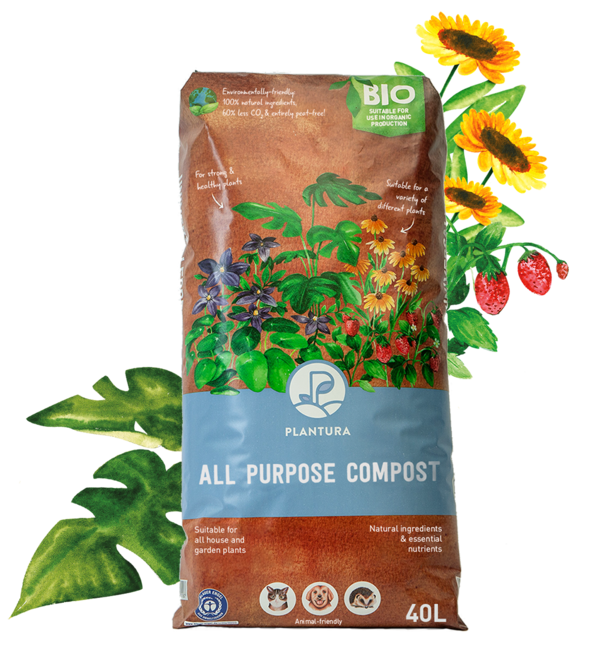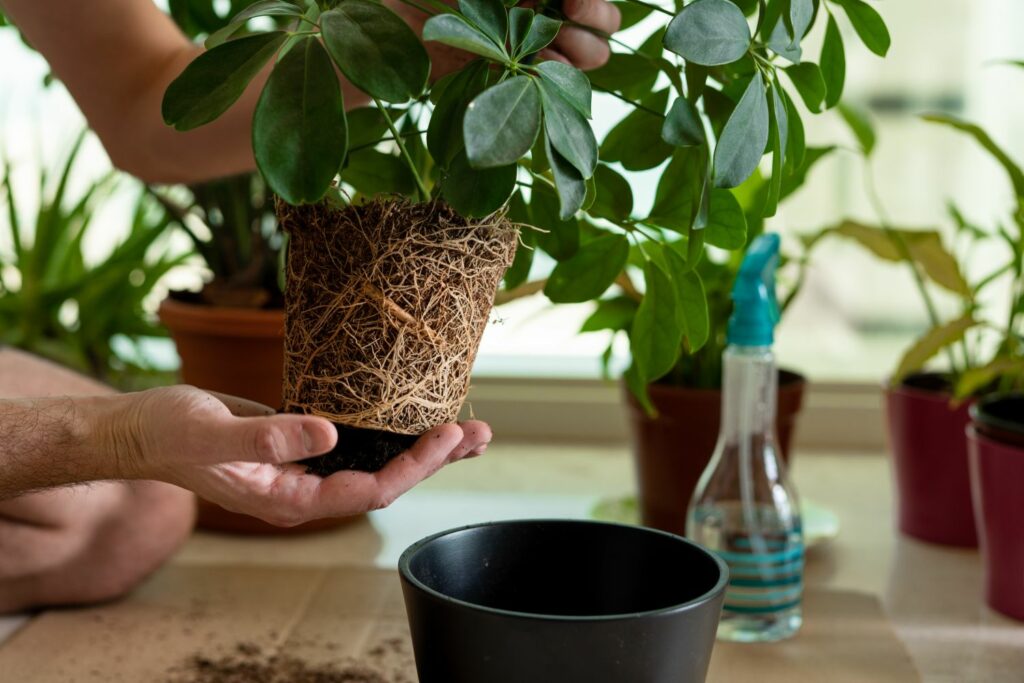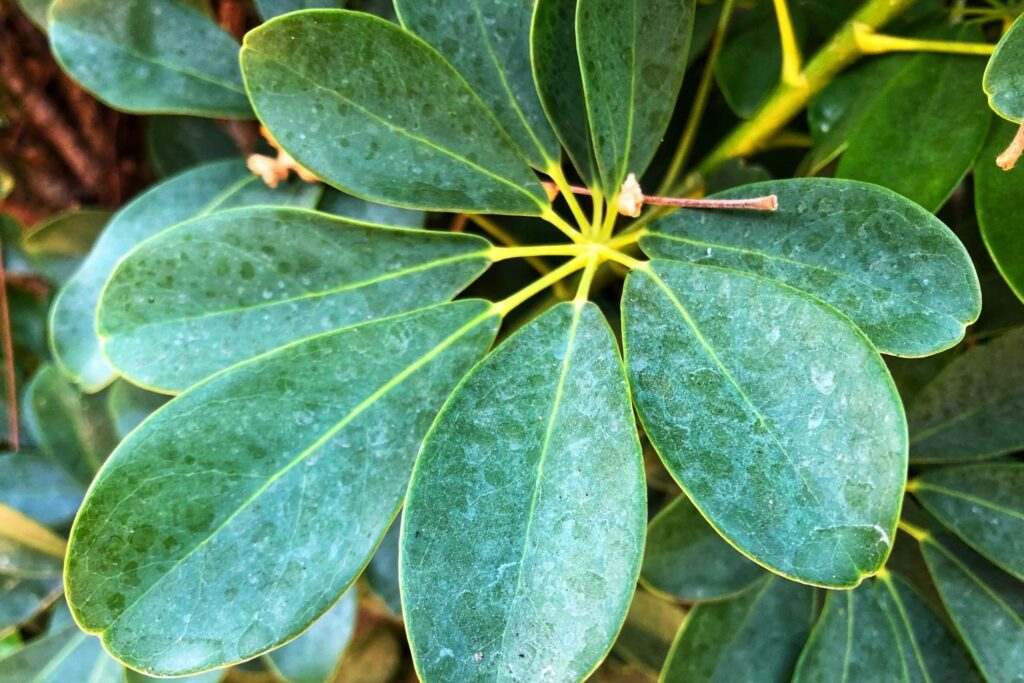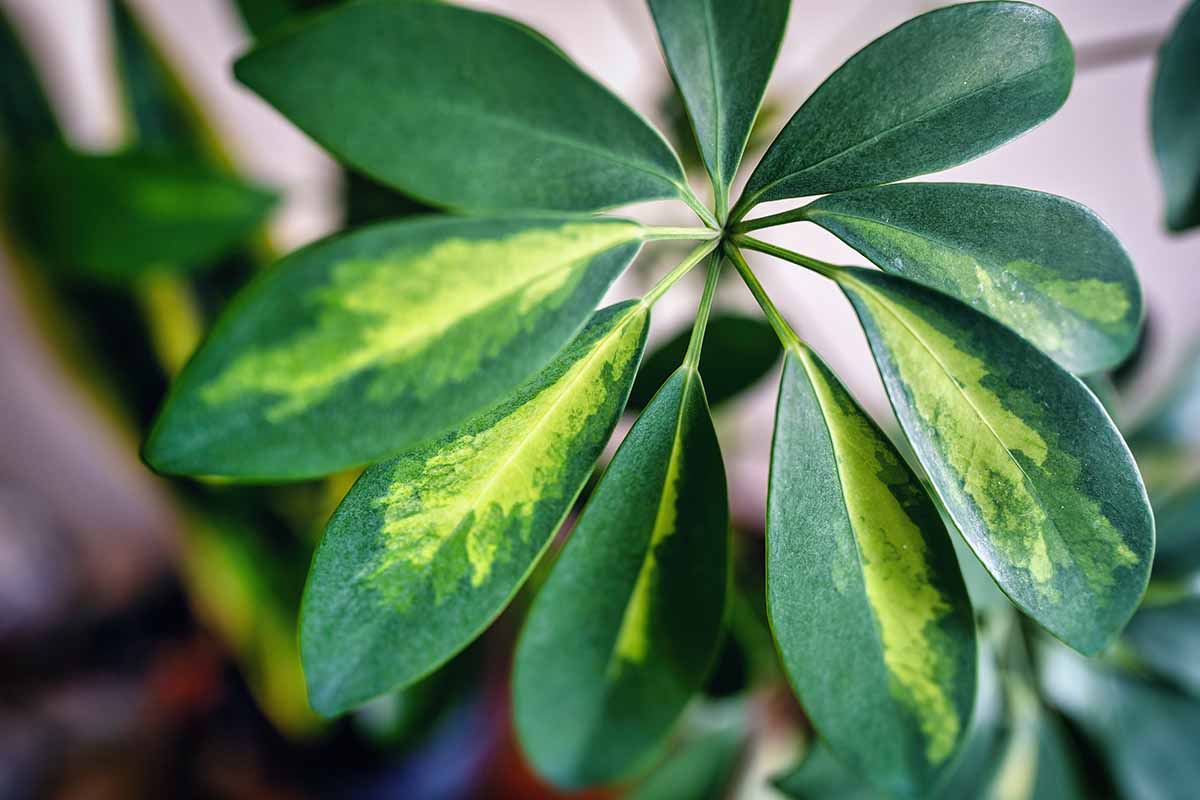I study landscape ecology and through my studies have discovered a love for plants. Plants are not only beautiful, but also have countless fascinating survival strategies. To bring some nature into my home too, I take care of houseplants and herbs on every windowsill I can find. Favourite fruit: rhubarb and all kinds of berries Favourite vegetables: onions and garlic.
It’s not hard to take care of an umbrella plant. With a little love, this plant will grow well and have lots of shiny leaves. Learn all about your Schefflera’s needs and concerns.
Water and nutrients are the umbrella plant’s (Schefflera arboricola) two most basic needs. The occasional pruning also benefits the plant and promotes bushy growth. Find out how to take better care of your umbrella plant and how to tell when it’s time to repot your Schefflera by reading on.
This article focuses on the dwarf umbrella tree, also known as umbrella plant and dwarf schefflera. To learn about other Schefflera species, like the fussier false aralia (Schefflera elegantissima), read our general Schefflera article.
In order for your Schefflera to grow strong, the right care and environment are important. Regular watering and fertilising are key to keeping your plant happy and healthy.
Umbrella plants tolerate the occasional dryness better than too much moisture. Let the soil dry out between waterings, and before you water again, make sure it feels dry. Hard water can lead to calcium build up on a Schefflera’s leaves, hindering its ability to absorb nutrients. So, opt for soft water or rainwater if possible. Watering umbrella plants by the immersion method has been proven to be effective. Put the plant’s pot in a bucket of water for a short time, until no more air bubbles rise. Be sure to let the soil drain well before returning the umbrella plant back to its place.
Tip: Mist your Schefflera with calcium-free water and wipe the dust off the leaves every so often to keep its beautiful shine.
Apart from during their dormant period in winter, umbrella plants need nutrients every two weeks for healthy growth. A liquid plant fertiliser, such as our Plantura Liquid Houseplant Food, works wonders and is easy to apply. Schefflera plants get beautiful leaves from our organic fertilizer, and the roots stay strong and healthy because the fertilizer supports them. To apply, simply dilute some of the liquid fertiliser into water and water as usual. This ensures that the nutrients are evenly distributed in the soil and quickly available to the plant.
The umbrella tree, also known as schefflera, is a popular houseplant known for its glossy, hand-shaped leaves and graceful, vining stems. Native to Taiwan and various Islands of the South Pacific, umbrella trees bring a touch of the tropics wherever they grow.
Caring for an umbrella tree is relatively straightforward but getting the conditions just right is key to keeping your plant healthy and looking its best. In this article, we’ll walk through the ideal care for umbrella trees so you can keep yours flourishing for years to come.
Lighting Needs
Umbrella trees prefer bright, indirect light. They should be situated near an east or west facing window where they will receive abundant ambient sunlight throughout the day without risk of scorching their leaves with direct sun exposure. A southern exposure can also work if you diffuse the light by using a sheer curtain.
Insufficient light will cause an umbrella tree’s leaves to become sparse and leggy as the plant reaches for sunlight On the other hand, too much direct sun will burn the leaves Find the sweet spot where your plant gets bright light from sunrise to sunset. Rotate the plant weekly to ensure even exposure.
Ideal Temperature
Umbrella trees thrive in warm temperatures between 60-80°F. Exposure to temperatures lower than 60°F can shock the plant and cause leaf drop. During the winter months consider moving your umbrella tree to the warmest room in your home. You can supplement with a grow light if sunlight levels drop too low.
Avoid placing umbrella trees directly next to heating vents or drafty windows in the wintertime. The cold air and temperature fluctuations can stress the plant.
Potting Mix
Umbrella trees grow best in a rich, acidic potting mix that drains well. A quality potting soil formulated for tropical plants is ideal, as it will contain nutrients umbrella trees need.
You can also make your own mix using one part peat moss or coco coir, one part perlite or vermiculite, and one part compost or worm castings. Adding some chopped oak leaves will help acidify the soil.
Ensuring proper drainage is key. Umbrella trees are prone to root rot if their soil stays soggy. Create drainage holes in the container and use a pot with drainage trays to prevent waterlogged soil.
Watering
Umbrella trees should be watered whenever the top few inches of soil become dry. Check by inserting your finger into the potting mix to gauge moisture. The plant likely needs water if the soil is dry deeper than your first knuckle.
Water thoroughly until it drains from the bottom of the pot, then empty any collecting trays so the plant isn’t left sitting in water. Allow all excess moisture to drain away before returning the plant to its decorative pot.
Take care not to overwater, as umbrella trees are susceptible to root rot in soggy conditions. Only water when the soil is partly dry. The plant may need watering every 4-7 days in the growing season, less frequently in the winter.
Fertilizer
Feed your umbrella tree every 2 weeks during spring through fall using a balanced liquid fertilizer diluted to half strength. This provides a steady supply of nutrients for growth. Discontinue fertilizer over winter when plant growth naturally slows.
Slow release fertilizer spikes inserted into the soil work well for umbrella trees. Look for a houseplant-specific formula. Follow package instructions for how many spikes to use per pot size.
Pruning
Pruning umbrella trees is essential to keeping them full and compact. Trim back leggy stems any time of year. Also, prune off any dead or damaged growth.
For the most natural shape, prune umbrella trees after they finish flowering in late winter or early spring. Cut back stems by at least one third their length. This stimulates bushier regrowth.
Shaping and trimming umbrella trees controls their size. Prune anytime growth gets unruly. Aim for an overall rounded shape. Sterilize pruners before use with rubbing alcohol to prevent disease transmission.
Typical Pests
Umbrella trees generally aren’t susceptible to many pests. However, watch for spider mites, mealybugs, and scale insects which can sometimes occur. You’ll notice fine webbing and speckling damage if spider mites are present. Mealybugs and soft scales leave behind cottony residue.
Isolate any infested plants to prevent spreading. Remove pests with a strong jet of water and prune off heavily infested leaves. Insecticidal soap or neem oil sprays can help eliminate remaining bugs. Apply them according to label directions.
With the proper care, your umbrella tree can grow for many years into an impressive specimen. Provide bright, indirect light, stable warm temperatures, a well-draining potting mix, attentive watering, regular feeding, and pruning to keep your plant looking its best! Follow these tips and you’ll have a thriving, lush umbrella tree to enjoy.
Repotting umbrella plants
Moving your umbrella plant to a bigger pot with new soil in the spring is a great way to get it ready for the growing season. As Schefflera plants grow quickly, young plants usually need to repotting annually. We recommend repotting older umbrella plants every two to three years.
Prepare your umbrella plant’s new pot by adding a drainage layer and then a layer of soil. We recommend using a high quality soil, such as our Plantura Organic All Purpose Compost. This soil keeps its shape for a long time, holds water well, and gives plants nutrients slowly over time.

- Perfect for all your house, garden & balcony plants
- For strong
- Peat-free & organic soil: CO2-saving composition
To encourage your Schefflera to grow larger, choose a pot one size up from the last when repotting. Carefully take the plant out of its old pot and wash the old soil off its roots. Cut off any rotten or dead parts of the roots. To limit the growth of your umbrella plant, cut back the roots a little more generously. Either way, be sure to cut back the shoots to the same degree that you trim the roots. The plant’s roots must be the right size for its crown so that the crown can be supported by the roots. Once trimmed, put the Schefflera in its new pot, and fill the pot with soil.

Common umbrella plant pests
Schefflera plants can’t only grow slowly if they aren’t cared for properly or put in the wrong place. There are also a handful of pests that are fond of umbrella plants, especially in winter.
- Spider mites: Plants can get brown, orange, and red spider mites on them. They eat the cells on the outside of leaves, leaving behind tiny silver dots and making very fine webs.
- Scale insects: These hardy pests like to live at the base of leaves and like dry places. Scale insects make honeydew that sticks to things, and their larvae eat plant sap.
- Mealybugs: these bugs make honeydew and eat plant sap. Mealybugs hide under leaves or in the spaces between leaves and are covered in white threads.
- Aphids: Aphids feed on plant sap and are usually found on new shoots. This causes the leaves to curl or grow misshapen.

To prevent pests in the first place, ensure your Schefflera has a suitable environment. Follow the link to learn what is important when planting umbrella plants.
Dwarf Umbrella Tree Care in 3 Easy Steps
- The Ultimate Guide to Growing Strawberries in Raised Beds - August 8, 2025
- No-Dig Garden Beds: The Easiest Way to Grow a Beautiful Garden - August 6, 2025
- How to Protect and Preserve Wood for Raised Garden Beds - August 6, 2025

